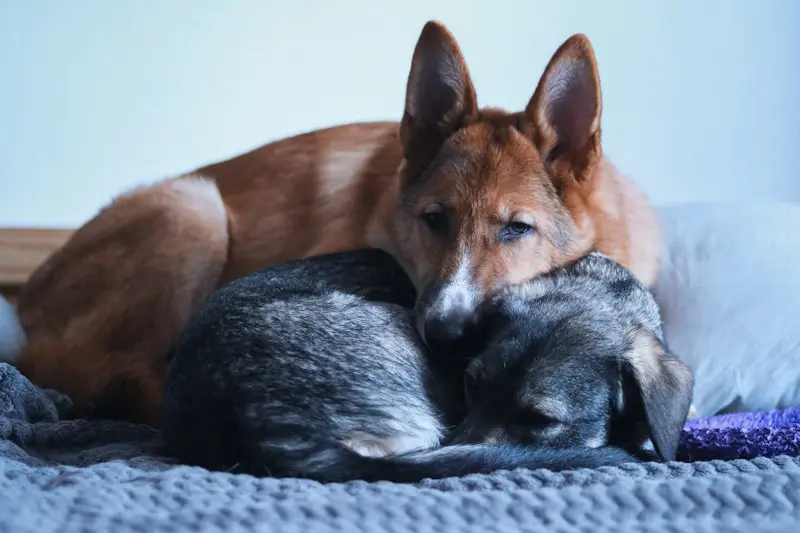
Dogs possess remarkable abilities, from their keen talent for reading human emotions through facial expressions to their extraordinary understanding of numbers. Now, researchers have evidence of yet another capability of these animals: it seems that dogs can listen in their sleep.
How was the sleep study conducted? A recent small pilot study involving 13 dogs revealed that the brains of these beloved pets light up in response to both dog and human voices while they are deeply asleep. According to ethologist Huba Eleod, this finding is significant as it provides the first evidence of complex auditory processing during sleep in dogs.
During the study, the dogs were connected to devices that measured their brain’s potential wave responses related to various stimuli. They were then exposed to vocalizations from both dogs and humans while awake, drowsy, or after being allowed to fully relax and fall asleep.

Each sound was played at the same volume and lasted about one second. The vocalizations included barking, whining, growling, coughing, laughter, sighing, and yawning. No negative sounds were used to avoid waking the dogs.
Dog sleep is quite similar to human sleep. As noted by Sciencealert, even during the rapid eye movement (REM) phase of sleep, dogs appeared to be able to discern whether the noise came from other dogs or humans, and whether the emotions or valence of the communication were positive or neutral. This ability has also been demonstrated in primates, including humans, as well as in other non-primates like mice. Given that mammals spend a significant portion of our time sleeping, the ability to process social signals even in such a state likely played a vital role in our survival.
How much we understand during sleep depends on both the sleep stage we are in and the type of noise we experience. For instance, even in sleep, our names elicit different reactions compared to other sounds.

Like humans, dogs rely on sleep to strengthen their memories and process emotions. Their sleep has evolved with domestication and resembles human sleep more than that of other laboratory species. Dogs also suffer from shallow and interrupted sleep in old age, similar to how humans with dementia experience sleep disturbances.
While further research is needed to confirm these findings, the results add to the growing list of similarities between the sleep behaviors of dogs and humans. As Mr. Eleod explains, this opens up opportunities for using these pets in comparative studies for neuroscientists. This way, researchers can explore the processing of auditory stimuli during sleep, as it does not require prior training and does not cause any suffering or harm to the animals. As Mr. Eleod points out, our most reliable companion animals can help us learn about the shared features of mammalian brains.
